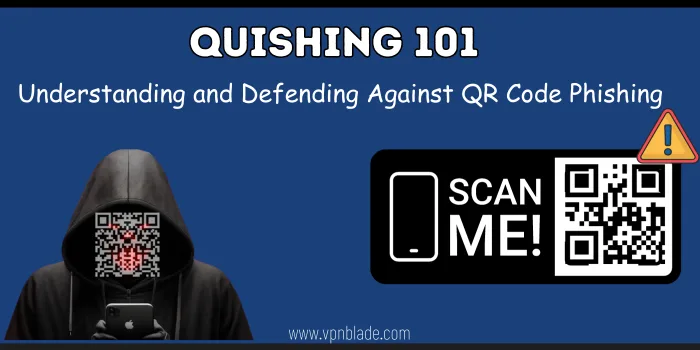A new sneaky player is on the scene in the vast online jungle. It’s called “quishing.” This QR code phishing trick is gunning for your digital life.
Imagine you receive an email with a QR code that promises you a great deal or a valuable document. You scan it with your smartphone and expect to see something useful or exciting. But instead, you end up on a fake website that steals your personal or financial information.
That’s what happened to hundreds of people who fell victim to a clever phishing scam that used QR codes to bypass security.
Understanding The Scale
This scam targeted mainly a big energy company in the US but also hit other businesses in different sectors. Out of 1,000 emails that were sent by the hackers, 29% went to the energy company, while the rest were distributed among manufacturing (15%), insurance (9%), technology (7%), and financial services (6%). The hackers used QR codes to hide their malicious links and trick the recipients into opening them.
The consequences of quishing are dire. A deceitful code leads to a fake website, coaxing sensitive details from you —login credentials, credit card info, and even your bank numbers. Picture the aftermath: pilfered earnings, compromised identity, and unauthorized access to your accounts.
Yet, the threat extends beyond stolen data. The malevolent code can trigger malware downloads like ransomware, spyware, and trojans.
Such malware hijacks your files, demands ransoms, monitors your every move, seizes control and steals even more personal data. Moreover, it could spam and phish from your account, send deceptive QR codes or harmful links to your contacts, damage your reputation, and ultimately damage your relationships. Although you can use VPN to enhance data security and prevent malware downloads or hijacks files.
How To Battle Against Quishing Attempts?

Phishing attempts involving QR codes exhibit distinct characteristics that warrant scrutiny. Firstly, the origin of the QR code holds significance. Being vigilant is paramount if you receive a QR code from an unexpected or untrustworthy source, such as an unsolicited email or message.
From the get-go, you can consider leveraging the power of password managers against QR phishing attempts. With a password manager, your login credentials are tied to specific URLs. So, even if you unwittingly end up on a phishing site, the trickery doesn’t happen.
Your info won’t autofill because the URL doesn’t match the one your password manager has on record. It’s like having a built-in radar for fake websites, keeping you one step ahead and your credentials safe.
However, having a password manager alone is not enough; you still need to exercise caution and look for the signs. Take a moment to read Users Of Biggest NFT Marketplace Warned Over Phishing After Data Leak, which was recently hacked 21 million user accounts.
Tips To Recognize A Quishing Attempt
Legitimate businesses tailor QR codes to individual users, reflecting personalized details. Therefore, encountering a generic QR code devoid of specific information raises a red flag, signaling a potential phishing ploy.
Before hastily scanning a QR code, take a moment to inspect the embedded URL. Look for misspellings or unusual characters, as these could serve as indicators of a phishing expedition.
Reputable QR codes lead users to straightforward URLs. Conversely, an overly complex or randomly strung-together URL is often a telltale sign of a phishing attempt.
Another avenue for scrutiny lies in branding. Phishing scams frequently use typosquatting, creating fake websites that mimic authentic ones. Pay close attention to inconsistent branding or design elements, as they may unveil the fraudulent nature of the QR code.
Grammatical accuracy also serves as a clue. If the accompanying text contains misspelled words or grammar blunders, it suggests haste in creation—a potential red flag that the QR code could be a conduit to a phishing trap.
Promises that seem too good to be true often indicate a mirage. Exercise skepticism, especially if the QR code claims you’ve unexpectedly won a prize.
Lastly, be wary of urgency. Phishing attempts often exploit urgency or scare tactics. If a QR code pressures you for swift action, it is prudent to take a moment to reassess and question its legitimacy. Adopting a skeptical approach can be a crucial defense against falling victim to phishing schemes through QR codes.
Conclusion
The rise of QR code phishing is a stark reminder that our digital footprints are not immune to cunning predators. The convenience we cherish becomes a double-edged sword, with malicious actors exploiting our trust in those square patterns. But here’s the twist: knowledge is our shield, and awareness our sword.
